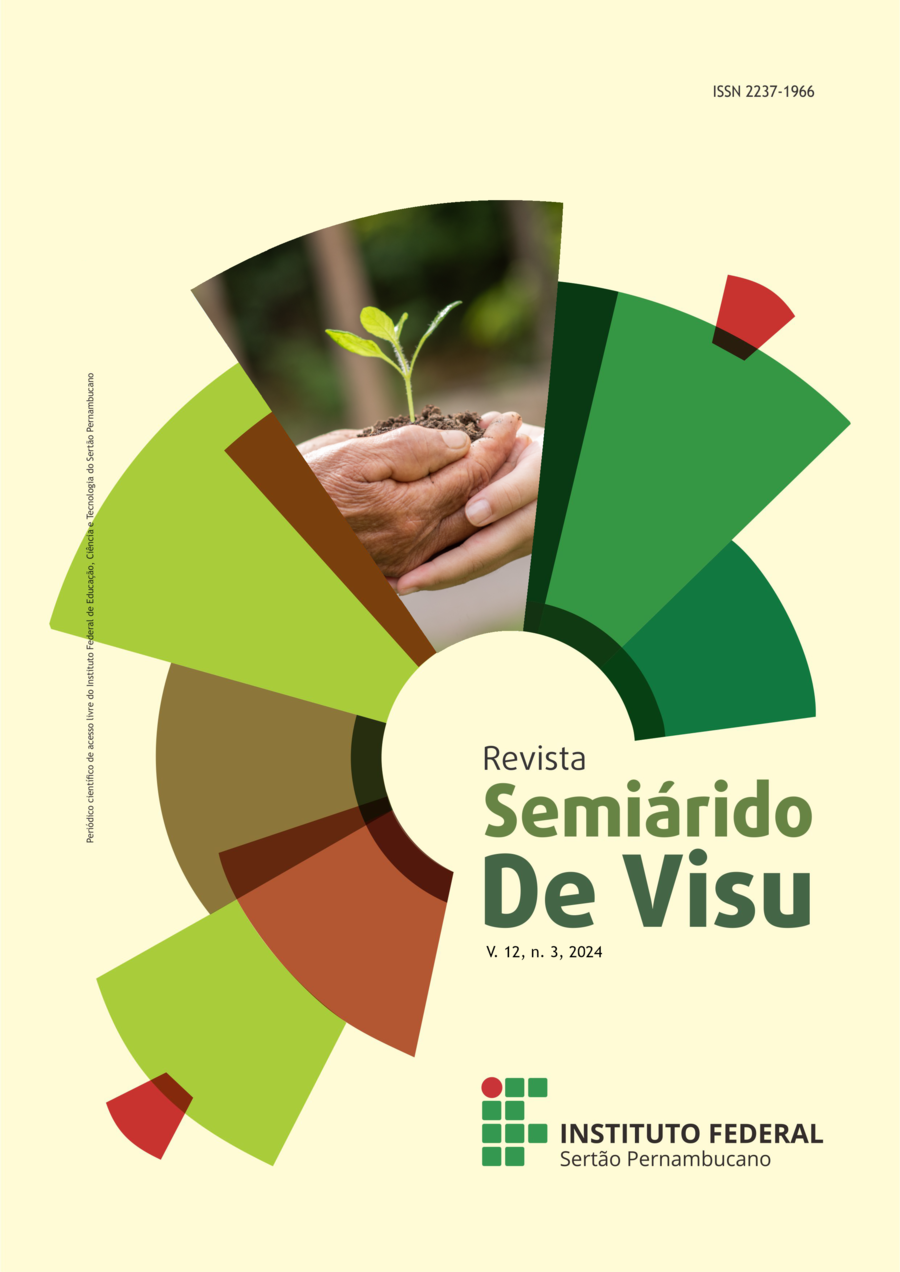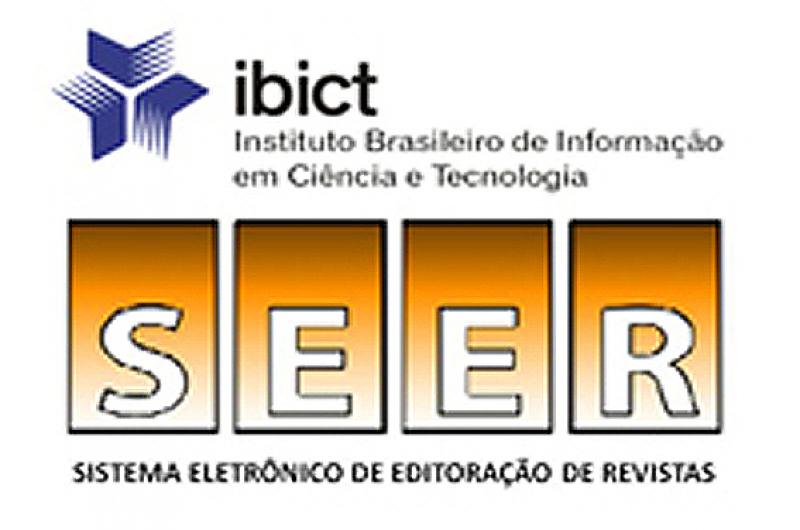Blue natural dye from edible flower (Clitoria ternatea): Extraction, characterization and stability assessment.
Visualizações: 645DOI:
https://doi.org/10.31416/rsdv.v12i3.899Abstract
Through the growing interest in obtaining and applying natural pigments in food systems, edible flowers have begun to gain prominence, and their production has been driven by the nutraceutical characteristics they confer to foods. Clitoria ternatea possesses various chemical constituents with pharmacological effects, a high content of anthocyanins, and antioxidant capacity. The objective was to use the edible flower Clitoria ternatea for the extraction and evaluation of stability and technological feasibility in obtaining food dyes. The extract obtained from the flower was concentrated to 20% of its original volume, characterized for anthocyanin content and antioxidant capacity, and subjected to stability testing with buffered samples exposed to light and darkness at room temperature (± 25°C) for five weeks at different pH levels. In all conducted studies (anthocyanin content, colorimetry, and degradation kinetics), the results indicated that light has a deleterious effect on anthocyanins, although not as pronounced, suggesting that the possibly acylated chemical structure makes the anthocyanic extract relatively more stable than other sources already studied. Furthermore, it is worth noting that, although lower pH values are favorable for stabilizing the cationic flavilium form, the extract in question exhibited significantly high half-life values even at a pH around 5. This result is particularly interesting as this pH range corresponds to the desired blue color of the extract.
References
ABDULLAH, R., LEE, P. M., & LEE, K. H. Multiple color and pH stability of floral anthocyanin extract: Clitória ternatea. International Conference on Science and Social Research, p. 254-258, 2010. DOI: 10.1109/CSSR.2010.5773778
AZIMA, A M SITI ; NORIHAM, A ; MANSHOOR, N. Synergistic effects of Garcinia mangostana and Clitoria ternatea extract mixture on antioxidant activities, colour, and anthocyanin stabilities. International food research journal, v. 29, n. 3, p.631-645, 2022. DOI: 10.47836/ifrj.29.3.15
BUENO, M. J., SAEZ-PLAZA, P., RAMOS-ESCUDERO, F., JIMENEZ, A. M, FETT, R., ASUERO, A. G. Analysis and antioxidant capacity of anthocyanin pigments. Part II: chemical structure, color, and intake of anthocyanins. Critical Reviews in Analytical Chemistry, v.42, n 2, p. 126–151, 2012. DOI: :10.1080/10408347.2011.632314
CHATHAM, L. A., HOWARD, J. E. AND JUVIK, J. A. A natural colorant system from corn: flavone-anthocyanin copigmentation for altered hues and improved shelf life. Food Chemistry, v.310, p. 125734, 2020. DOI: 10.1016/j.foodchem.2019.125734
CONSTANT, P. B. L.; BORGES, A. S.; NUNES, T. P.; SILVA, F. L. A. T.; SILVA, A. G.; LIMA, V. C. N. N.; FERREIRA, M. S. A. S.; STRINGHETA, P. C. Aplicação do corante de açaí (Euterpe oleracea M) em sistemas alimentícios. Observatorio de la Economía Latino Americana, v. 21, n. 11, p. 18571–18593, 2023. DOI:10.55905/oelv21n11-001
CUNNIGHAM, E. What nutritional contribution do edible flowers make. Journal of the Academy of Nutrition and Dietetics, v. 115, n. 5, p. 856, 2015. DOI: 10.1016/j.jand.2015.03.002
DEL RÉ, P.V.; JORGE, N. Especiarias como antioxidantes naturais: aplicações em alimentos e implicação na saúde. Revista brasileira de plantas medicinais, v. 14, n. 2, p. 389-399, 2012. DOI:10.1590/S1516-05722012000200021
GOH, S. E.; KWONG, P J.; NG, C. L.; NG, W. J.; EE, K. Y. Antioxidant-rich Clitoria ternatea L. flower and its benefits in improving murine reproductive performance. Food Science and Technology, v. 42, p. e25921, 2022. DOI:10.1590/fst.25921
FULEKI, T.; FRANCIS, F. J. Quantitative methods for anthocyanins. 1 Extraction and determination of total anthocyanin in cranberries. Journal of Food Science, v.33, p.72-77, 1968. DOI: 10.1111/j.1365-2621.1968.tb00887.x
HUNTERLAB. Applications note: CIE L* a* b* color scale. 1996. Disponível em https://support.hunterlab.com/hc/en-us/article_attachments/201439655
KUNGSUWAN, K., SINGH, K., PHETKAO, S., Y UTAMA-ANG, N. Effects of pH and anthocyanin concentration on color and antioxidant activity of Clitória ternatea extract. Food and Applied Bioscience Journal, v. 2, n.1, p. 31-46, 2014. DOI: /10.14456/fabj.2014.3.
LARRAURI, J. A.; RUPÉREZ, P.; SAURA-CALIXTO, F. Effect of drying temperature on the stabilitity of polyphenols and antioxidant activity of red grape pomace peels. Journal Agriculture Food Chemistry, v.45, p.1390-1393, 1997. DOI: /10.1021/jf960282f
Lee Y. K., Yu B., Lim H. N., Lim J. I. Difference in the color stability of direct and indirect resin composites. J. Appl Oral Sci., v. 19, n. 2, p. 154-160, 2011. DOI:10.1590/S1678-77572011000200012
LI, A., LI, S., LI, H., XU, D., XU, X., & Chen, F. Total phenolic contents and antioxidant capacities of 51 edible and wild flowers. Journal of Functional Foods, v. 6, n. 1, p. 319–330, 2014. DOI: 10.1016/j.jff.2013.10.022
MARPAUNG, A. M., ANDARWULAN, N., PRANGDIMURTI, E. The optimization of anthocyanin pigment extraction from butterfly pea (Clitória ternatea L.) petal using response surface methodology. Acta Horticulturae, v. 1011, p. 205–211, 2013. DOI:10.17660/ActaHortic.2013.1011.24
MAZZA, G. and MINIATI, E. Anthocyanins in fruits, vegetables, and grains. 1d, Boca Raton: CRC Press, 1993.
MOTA, F. G.; NUNES, T. P.; BORGES, A. S.; SILVA, A. G.; CONSTANT, P. B. L. . Extraction and quantification of anthocyanins from dehydrated Clitorea Ternatea flowers. Research, Society and Development, v. 11, n. 9, p. e55111932293, 2022. DOI: 10.33448/rsd-v11i9.32293.
MOTA, F G.; BORGES, A. S; NUNES, T. P.; GAGLIARDI, P. R.; SILVA, R. R.; SILVA, A. G.; DURIGON, A.; CONSTANT, P. B. L. Flor de Clitoria ternatea: desidratação e caracterização. Observatório de la Economía Latino Americana, v. 21, p. 9740-9757, 2023. DOI:10.55905/oelv21n8-102
OTT, D. B. Manual de Laboratorio de Ciencia de los Alimentos. 1d, Zaragoza: Editorial Acribia, 1992.
ORR, D. Cultivo e comercialização de flores comestíveis. Revista da Associação Brasileira de Horticultura, Brasília, v 26, n 3. p 1, 2011.
PEDRO, A. C., GRANATO, D., ROSSO, N. D. Extraction of anthocyanins and polyphenols from black rice (Oryza sativa L.) by modeling and assessing their reversibility and stability. Food Chemistry, v. 191, p. 12–20, 2016. DOI: 10.1016/j.foodchem.2015.02.045
PULIDO, R.; BRAVO, L.; SAURA-CALIXTO, F. Antioxidant activity of dietary as determined by a modified ferric reducing/antioxidant power assay. Journal Agriculture and Food Chemistry, v. 48, p. 3396-3402, 2000. DOI: 10.1021/jf9913458
RE, R., PELLEGRINI, N.; PROTEGGENTE, A.; PANNALA, A.; YANG, M.; RICE-EVANS, C. Antioxidant activity applying an improved ABTS radical cation decolorization assay. Free Rad. Biol. Medic., v. 26, n. 9-10, p. 1231–1237, 1999. DOI: 10.1016/s0891-5849(98)00315-3
RESENDE, L. G. M.; SANTOS, J.; SANTOS, B. S.; TELES, A. R. S.; CONSTANT, P. B. L. Corante antociânico extraído do fruto jambolão: formulação e avaliação da estabilidade dos compostos bioativos. Interação, v. 21, p. 645-658, 2021. Recuperado de https://interacao.org/index.php/edicoes/article/view/72
SILVA, G.J.F.; CONSTANT, P.B.L.; SILVA, A.G.; NARAIN, N.; MOURA, S.M. Potential of jabuticaba ( spp.) fruit in obtaining the natural functional colors for foods. Acta Horticulturae, v. 1, p. 97-100, 2018. DOI: 10.17660/ActaHortic.2018.1198.18
SIPAHLI S., MOHANLALL V., MELLEM J. Stability and degradation kinetics of crude anthocyanin extracts from H. Sabdariffa. Food Sci. Technol., v. 37, n. 2, p. 209-215, 2017. DOI:10.1590/1678-457X.14216
TEIXEIRA, L. N.; STRINGHETA, P. C.; OLIVEIRA, F. A. Comparação de Métodos para Quantificação de Antocianinas. Revista Ceres, v. 55, n.4, 2008 p. 297-304, 2008. Recuperado de: https://www.redalyc.org/a
Downloads
Published
How to Cite
Issue
Section
License
Copyright (c) 2024 Revista Semiárido De Visu

This work is licensed under a Creative Commons Attribution 4.0 International License.















